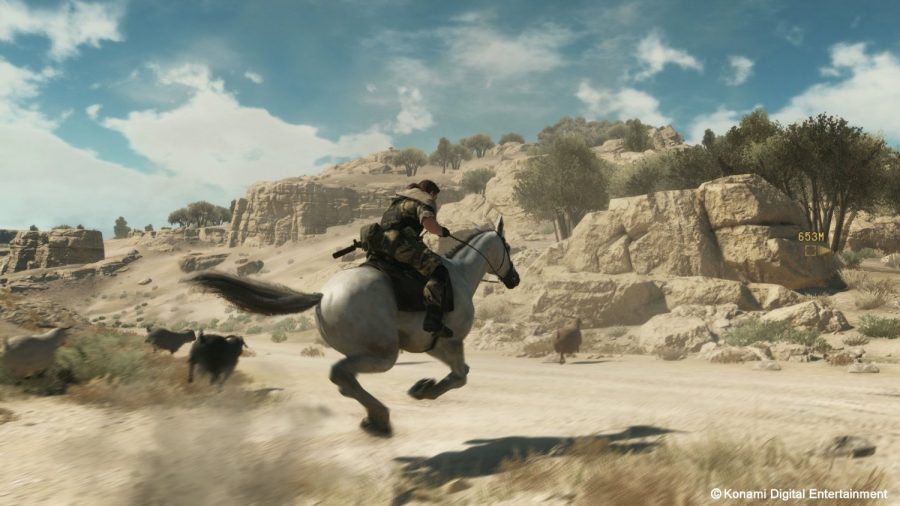“Kept ya waiting, huh?” This phrase has become synonymous with “Metal Gear Solid,” a series started in 1998 on the original PlayStation and that has had a great deal of time between releases. “Metal Gear Solid” series follows the stories of two primary protagonists: Solid Snake and Big Boss, who each carry out stealth operations in their respective eras. “Metal Gear Solid V: The Phantom Pain” finishes the Big Boss saga, hot off the heels of the previous entry, “Ground Zeroes,” albeit nine years later.
“Ground Zeroes” ended with a bang – literally, as a private military organization known as Cipher destroyed Big Boss’s base of operations, known as Mother Base, and fired a missile straight into Big Boss’s helicopter. Nine years later, Big Boss rises from a coma with some pretty serious injuries. He is missing an arm and now has a mysterious piece of shrapnel lodged in his forehead. Without many answers, he must escape the hospital during an intense attack, rebuild Mother Base and carry out a plot for revenge against Cipher.
“The Phantom Pain” takes the “Metal Gear” formula and builds upon it in ways never seen before in the franchise. For one, it is the first entry in the series to feature a completely open world, allowing the player much more freedom in approaching enemy outposts. As the player progresses through the game, development of weaponry and gear becomes available to allow the player to tune their load-outs to their play style. Will you take the quiet approach and go in with tranquilizer darts and smoke grenades, or go in guns blazing, with assault rifles and grenade launchers? “The Phantom Pain” leaves this choice up to you, but the latter leaves your base without soldiers. Introduced in “Metal Gear Solid: Peace Walker,” the Fulton recovery system makes a return, though it is now greatly expanded. In the past, you could only recover soldiers, but now Big Boss can send animals, weaponry and even tanks back to Mother Base for research and development.
The game offers an extremely large amount of content, with over 30 story missions, 157 side-missions and the addition of micro-managing your base to send units on their own set of deployment missions for resources. There are hundreds of development projects including guns, vehicles and tactical gear. The game also lets you freely roam the world to find blueprints or cause chaos at will. In my personal play through of the game, I’ve put 19 hours in. While this seems like a lot of playtime, the game’s play Record screen reports this as an overall completion record of 18 percent. While the “Metal Gear Solid” series has never been one to have a short story or lack of content, “Metal Gear Solid V: The Phantom Pain” takes that idea to the extreme.
“The Phantom Pain” is extremely enjoyable, offering hours upon hours of gameplay: be it managing your base, going out on missions or even customizing your gear. The stealth elements and gunplay are solid and fun to play around with. Developing your weapons and experimenting to find the best play style has been one of the most rewarding experiences in a video game I’ve had all year. Though this may be the last “Metal Gear Solid” game we’ll see from series creator, Hideo Kojima, it was a fitting end to the saga of Big Boss.









